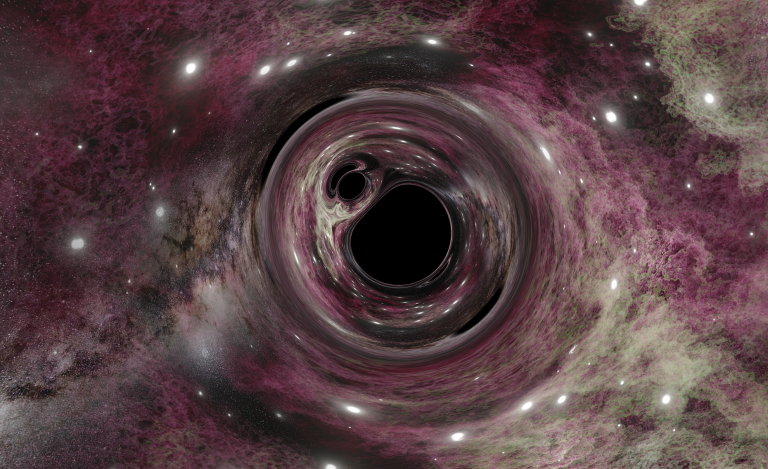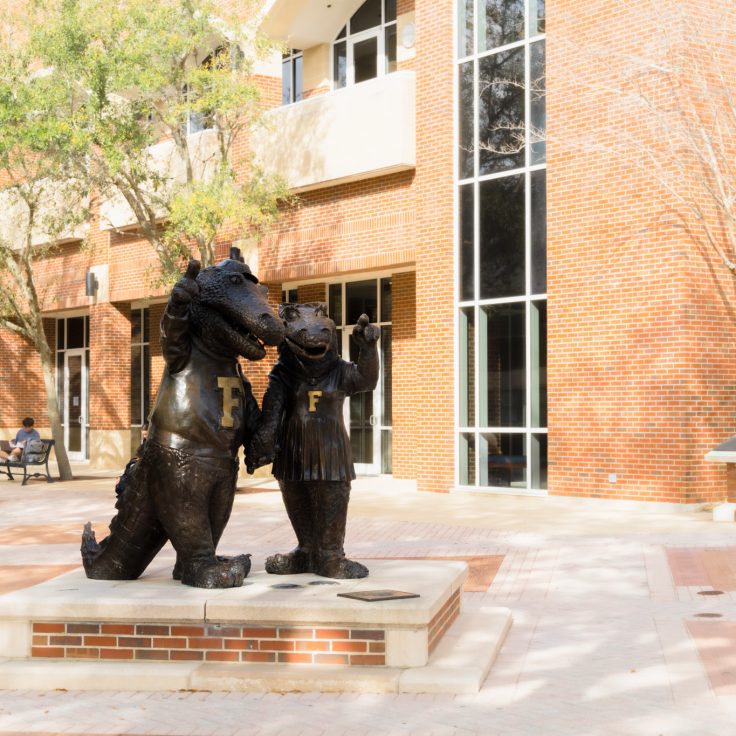New Findings Illuminate the Origins of Black Hole Mergers
A team of scientists pushes the limits to challenge previous theories of black holes in galaxies like our own
It’s a union unlike any other in the cosmos: The merger of black holes has been a hotly contested event shrouded in mystery. Thanks to the power of advanced simulation tools, UF astrophysicist Jeffrey Andrews and collaborators are providing a clearer picture of the formation of these monstrous celestial pairs. Their results, published in Nature Astronomy, present a more accurate representation of the black holes forming in the Universe, challenging previous theories. The team’s unexpected findings reveal that Milky Way-like galaxies have the capacity to produce black holes with masses up to 30 times that of our Sun.

The discovery was made possible with the team’s innovative employment of AI techniques in their modeling approach. To better understand the massive objects, the researchers took it back to the beginning. Their focus lies on binary stars, two gravitationally bound stars that eventually evolve into black holes.
Given the inherent challenge of directly observing the formation of merging binary black holes, the team turned to simulations they produced to replicate their observational characteristics.
“Essentially, we do the same thing the Universe does,” said Andrews. “We generate millions of stellar binaries on a computer and evolve them forward using our best understanding of how binary stars evolve over time.”

POSYDON, their next-generation theoretical modeling tool, incorporates machine-learning methods to generate models revealing the stellar structure and evolution of millions of stellar binaries. The POYSDON collaboration, led by scientists from institutions including the University of Geneva, Northwestern, and the University of Florida, filled in the gaps of previously inaccurate models. By reconciling theoretical predictions with observational data, the team has achieved remarkable progress in unraveling the mechanisms responsible for black hole formation.
“As it is impossible to directly observe the formation of merging binary black holes, it is necessary to rely on simulations that reproduce their observational properties. We do this by simulating the binary-star systems from their birth to the formation of the binary black hole systems,” said Simone Bavera, a post-doctoral researcher at the Department of Astronomy of the University of Geneva’s Faculty of Science and leading author of the study.
Previous models had limitations in accurately estimating certain factors. They overestimated certain aspects, such as the expansion of massive stars, which impacts interactions within binaries. These elements are crucial in determining the characteristics of merging black holes. However, with the advanced capabilities of POYSDON, more precise predictions regarding the masses and spins of merging binary black holes are achieved.
In 2015, after decades of instrumental development, the Laser Interferometer Gravitational-Wave Observatory (LIGO) made the first-ever direct detection of gravitational waves. These ripples in the fabric of spacetime offer a new way to observe and study the universe. Traditional methods of astronomical study relied on electromagnetic radiation, like light, for study. Since black holes evaded this detection, knowledge of black holes has accelerated since the LIGO discovery.
However, LIGO has its limitations. While it’s helped detect nearly 100 mergers, LIGO hasn’t advanced knowledge of how black holes come to be found in orbit in the first place. POSYDON allowed the researchers to accurately model interactions between binary stars, giving new insight into their development.
“The initial detection of gravitational waves was just the beginning,” said Andrews. “Although there are still many unanswered questions, we are rapidly developing the tools to start answering them.”
The research team is already hard at work, crafting an updated version of their open-source POSYDON software that will unlock an extensive library of detailed stellar and binary simulations. This upgrade will enable the simulation of binaries in a wider range of galaxy types, unveiling even more celestial secrets.
Read the full article here.


